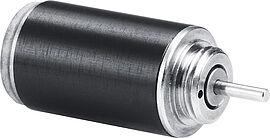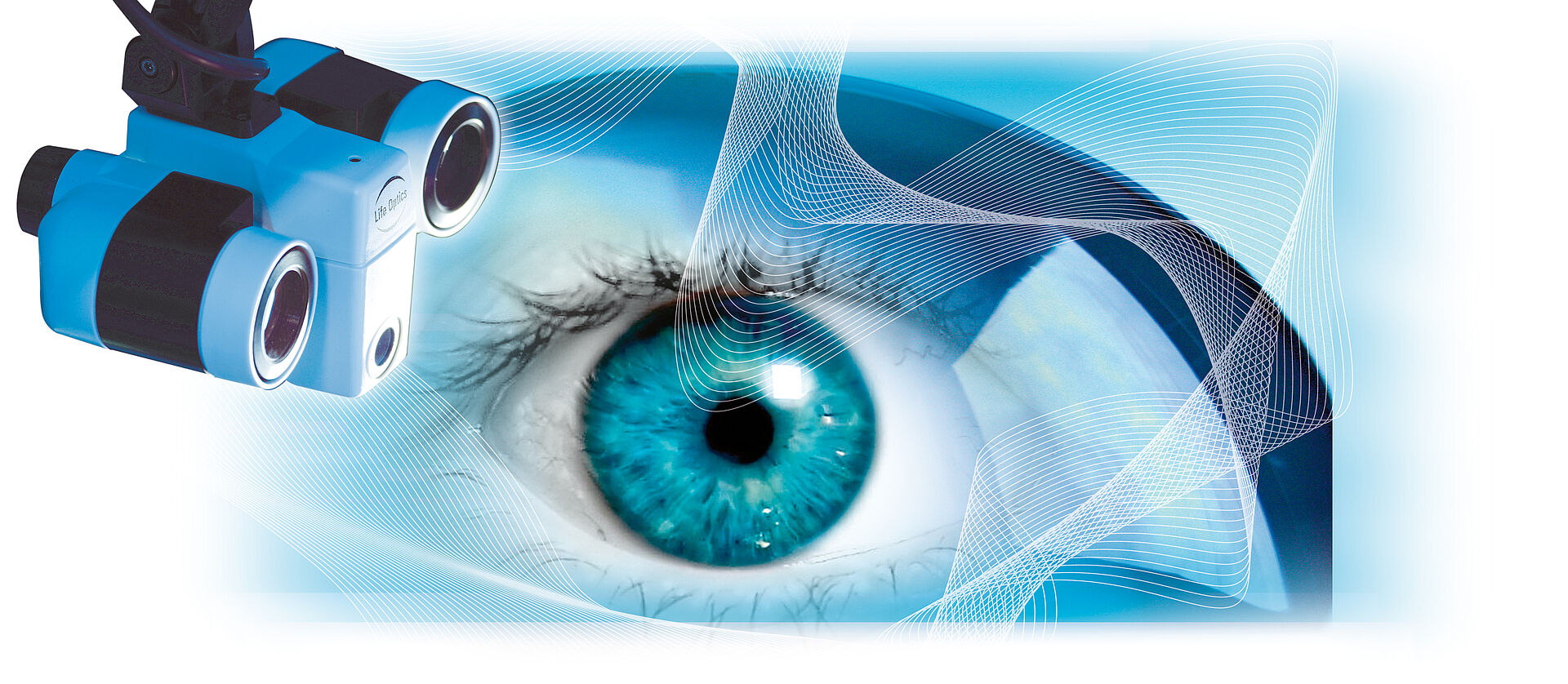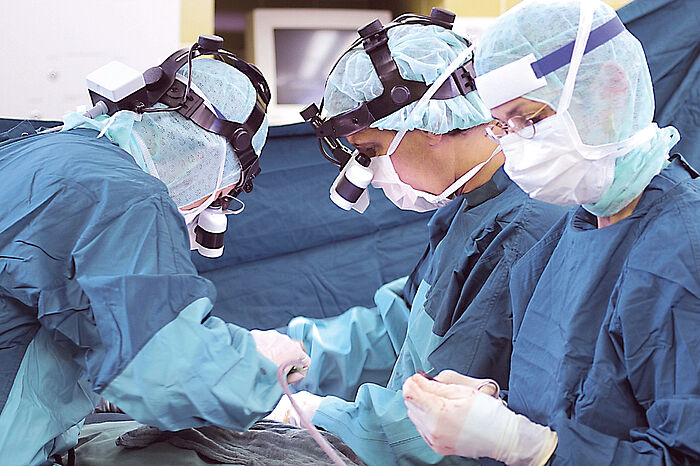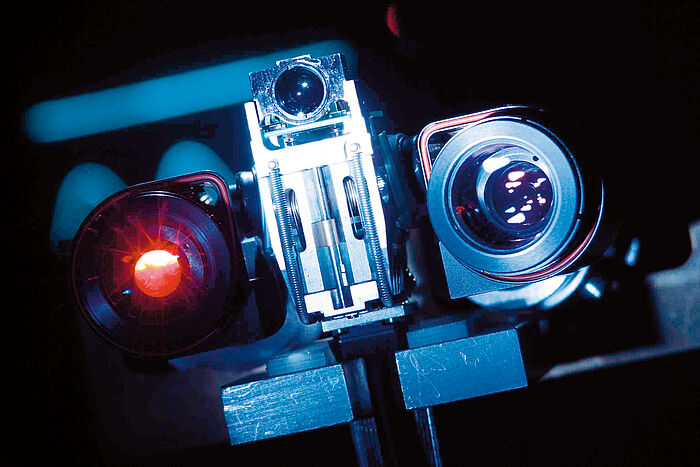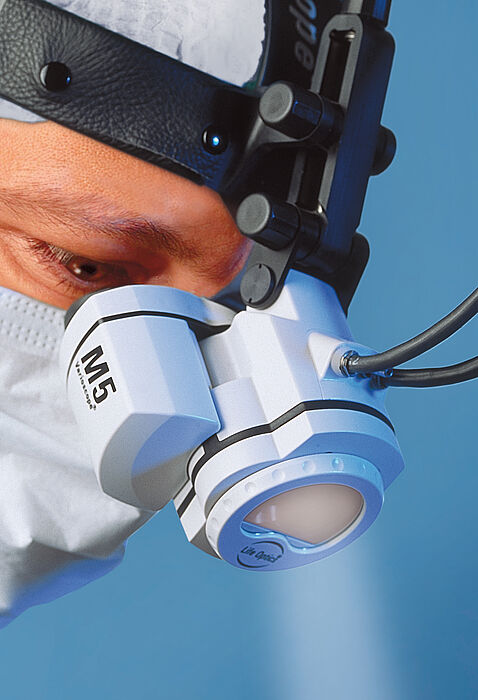Working with magnifying glasses and microscopes greatly limits freedom of movement. With magnifying glasses, the distance from the object is fixed, and microscopes are usually cumbersome and impractical. In addition, there is a very limited field of vision with both solutions. This is particularly detrimental in medicine. After all, it is a wellknown fact that nature has very few "standardized" dimensions, and the human body is no exception. Life Optics®, an Austrian high-tech company within this field, has found much sought-after remedy: a state-of-the-art microscope head set. This cutting-edge solution offers unlimited freedom of movement. The system has autofocus functionality, just like modern camcorders. The user does not have to stay at a specific distance – a key benefit compared with magnifying glasses. Furthermore, the two independent lens systems guarantee a three-dimensional field of vision.
In practice
Infinitely variable zoom function, autofocus and parallax control necessitate complex mechanics when it comes to adjusting the head-mountet operationmicroscope. In order to provide a compact, reliable and light-weight solution, Life Optics® teamed up with FAULHABER Group company FAULHABER PRECIstep, specialists in micro-stepper motors. The result: high-precision technology in the smallest possible space. In the basic version, available as Varioscope AF3, users can move freely in a working distance of 300 to 600 mm. The foot-operated zoom function allows infinitely variable magnification from 3.6 to 7.2. The field of vision is 30 to 144 mm, and the pupillary distance can be individually adjusted to each user. The Varioscope® M5 provides an extendible modular optical system. Changeable oculars extend the magnification range, and integrated lighting addresses the problem of shadows. An extended possibility of adjustment for individual eye data is a particularly user-friendly solution. With an optional video camera, procedures carried out by the user can be precisely recorded. Thus, lifeoptics has come up with a scalable solution tailored to a range of different requirements. And, thanks to its ingenious design, the device can be effortlessly transported from one workplace to another.
The heart of the mechanics
This highly complex yet portable system relies to a large extent on state-of-the-art micro-stepper motors. Unlike DC motors, stepper motors move on per pulse at a step angle dependent on their specific design. Thus, the number of digital pulses output always corresponds to a defined rotation. As a result, additional linear or angular position sensors are not required. The construction of the drive is smaller and lighter, and it is simpler to control. The Varioscope® requires two motors for each eye. The AM 1020 at a diameter of 10 mm for the focus setting and the AM 0820 at a diameter of 8 mm for the zoom. The focus drive operates more or less continuously, as it has to compensate for every movement of the head. Vision systems of this size are precision instruments and make particularly high demands on the accuracy of positioning. The problem of inaccuracies due to "play" in the mechanics was solved by FAULHABER PRECIstep by using a spindle with micro-toothing. With a pitch of 0.2 mm and in conjunction with the built-in motors, it allows a resolution of 10 µm. Both focus and zoom are set absolutely backlash-free and without jolts at high resolution. For this reason, the spindle shafts are also given an additional fine polish, a process which is normally only used in precision watches. In conjunction with a special lubricant, the level of friction is reduced considerably and thus also the initial breakaway torque. An additional pre-tensioning on the precision ball bearings by disk springs facilitates zero-backlash movement at torques of up to 1 N, a value which never actually occurs in practice.
Mighty minis
Stepper motors are suitable for many – even highly dynamic – positioning tasks. Thanks to carefully selected materials, these miniature units can accelerate up to 1200 rpm in one step and without overshooting. The use of high-quality NdFeB magnets with superior temperature resistance is the key to their performance. Indeed, the motors are able to provide continuous problem-free operation at 70 °C housing temperature for a period of several days – without interruption. In this case, the coil may actually reach a temperature of 120 °C and the magnet up to 100 °C – without any limitation on service life or effectiveness. A special lubricant that is particularly stable against temperature and aging supports these properties. Such standard motors have even ventured into space – with certification for 4 °K. What’s more, the motors are capable of performing to the highest standards of precision if they have been "out of action" for an extended period of time (performance proven after seven years of non-operation). Another advantage of the micromotor is the use with a 3 V operating voltage. In contrast, traditional DC motors need at least 5 V control voltage for the sensor technology. The "miniatures" can be supplied for operating voltages up to 12 V. The ability to identify and magnify minute structures has become more important than ever before. Modern micromechanical technology with micro-stepper motors provides the ultimate in "freedom of movement". Owing to the compact solution developed by Lifeoptics, sharp three-dimensional vision are guaranteed "on the move" – without any strain on the eyes. Lifeoptics and FAULHABER: pushing back the frontiers of science also there is an important contribution in quality assurance.
Products
